Affiliate disclosure: This post may contain affiliate links. Please see our Privacy Policy.
Herbal-infused honey is used for a wide variety of purposes, including as a carrier for medicinal herbs as well as a delicious addition to baked goods, salad dressings, and marinades. Use my simple process to make any type of infused honey you desire — all you need is honey and dried herbs!
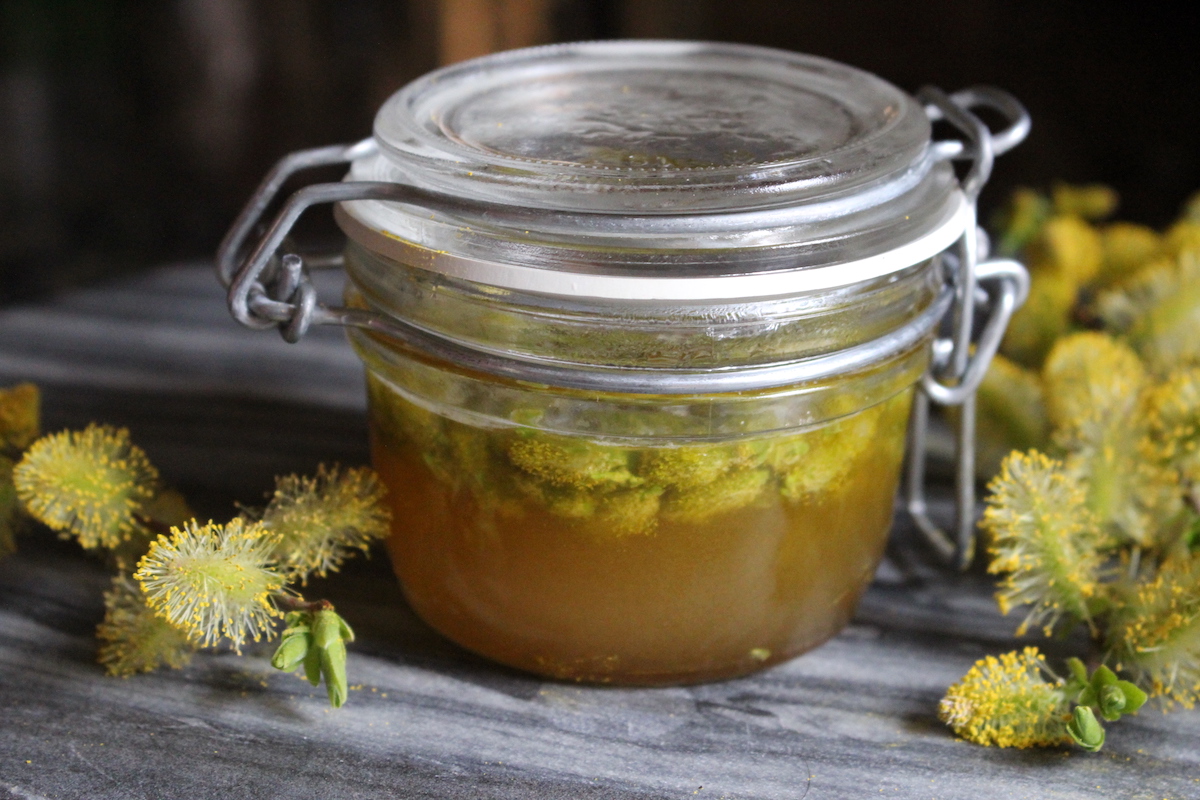
Herbal-infused honey is made by steeping dried herbs in honey, there’s no complicated method or fiddling with different temperatures required. In fact, it might surprise you to discover how simple it is to make your own infused herbal honey, especially when store-bought infused honey is sold at such a high premium in specialty food shops.
If you have honey, dried herbs, and time (about a month or so of passive time) then you’re well on your way to stocking your cupboards with all sorts of infused honey — for both medicinal and culinary purposes.
In terms of herbal extracts, infused honey is one of my favorite ways to use up extra or leftover dried herbs, particularly when the herbs themselves can be taken to counter cold and flu symptoms or lull the recipient into a state of relaxation or sleepiness. Of course, as per the advice of Mary Poppins, a spoonful of sugar helps the medicine go down, and honey works even better in my opinion.
I find that infused honey is the best way to get my little ones to take certain herbal remedies that while certainly effective, aren’t known for their great taste. (Be aware that honey should not be given to children under the age of 2. My kids are school-aged.)
Herbal-infused honey is also delicious when used for culinary purposes: smeared on buttered toast, drizzled over a cheeseboard, or added to cakes and scones — there are always new ways to find uses for lavender, sage, and thyme-infused honey (to name but a few).
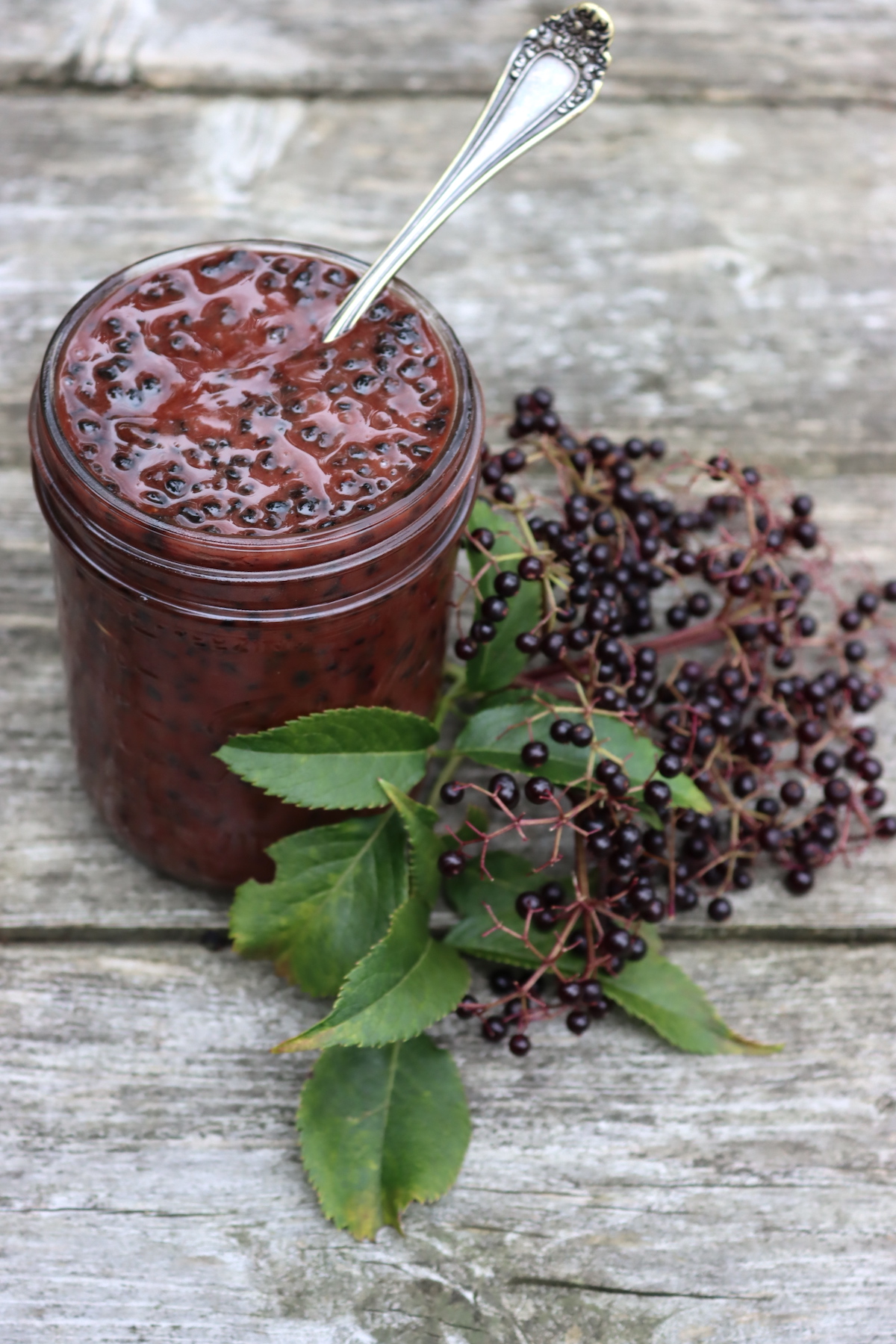
What is Herbal Infused Honey?
Infused honey is a simple herbal preparation made from dried herbs that have been steeped in honey over a period of time, usually about 1 to 4 weeks, depending on the desired strength.
Herbal-infused honey can be taken medicinally, like a herbal tincture or herbal-infused oil, or it can be used for culinary purposes (and some types are used for both endeavors!).
By using dried herbs instead of fresh herbs or other plant material, it’s super-easy to create infused honey that will last indefinitely in your cupboard, which means you can stock up on jars of honey for every need and occasion.
How to Make Herbal Infused Honey
There are two methods for making herbal infused honey, the no-heat method and the heated method. Unless I’m infusing honey with particularly woody material, such as dried roots, I greatly prefer the no-heat method as its dependable and requires minimal effort. The heated method is also used sometimes if fresh ingredients are added, which is a different project altogether. The difference between using fresh versus dried herbs requires some explanation, which I’ve given in greater detail below.
To make herbal infused honey all you need are two ingredients: honey and dried herbs.
In terms of which honey to use, I recommend using a light, mildly-flavored raw honey such as thistle, clover, or tupelo honey. More strongly flavored honey, like buckwheat honey, can be used in a pinch, but the herbal infusion won’t end up being as noticeable taste-wise (although the strength of the medicinal properties will stay intact).
Begin with a clean jar and a lid, I typically use a pint- or quart-size jar, depending on how much infused honey I want to end up with. Add the dried herbs first, filling the jar about halfway full with the plant material you’ve chosen. You can use a chopstick to help stir the herbs into the honey and to get rid of any air bubbles.
Place the jar in a warm location, a sunny windowsill is an excellent choice if you have one available.
Be sure to stir in the herbs regularly as they’ll generally float, and most of the infusion will happen towards the surface of the jar.
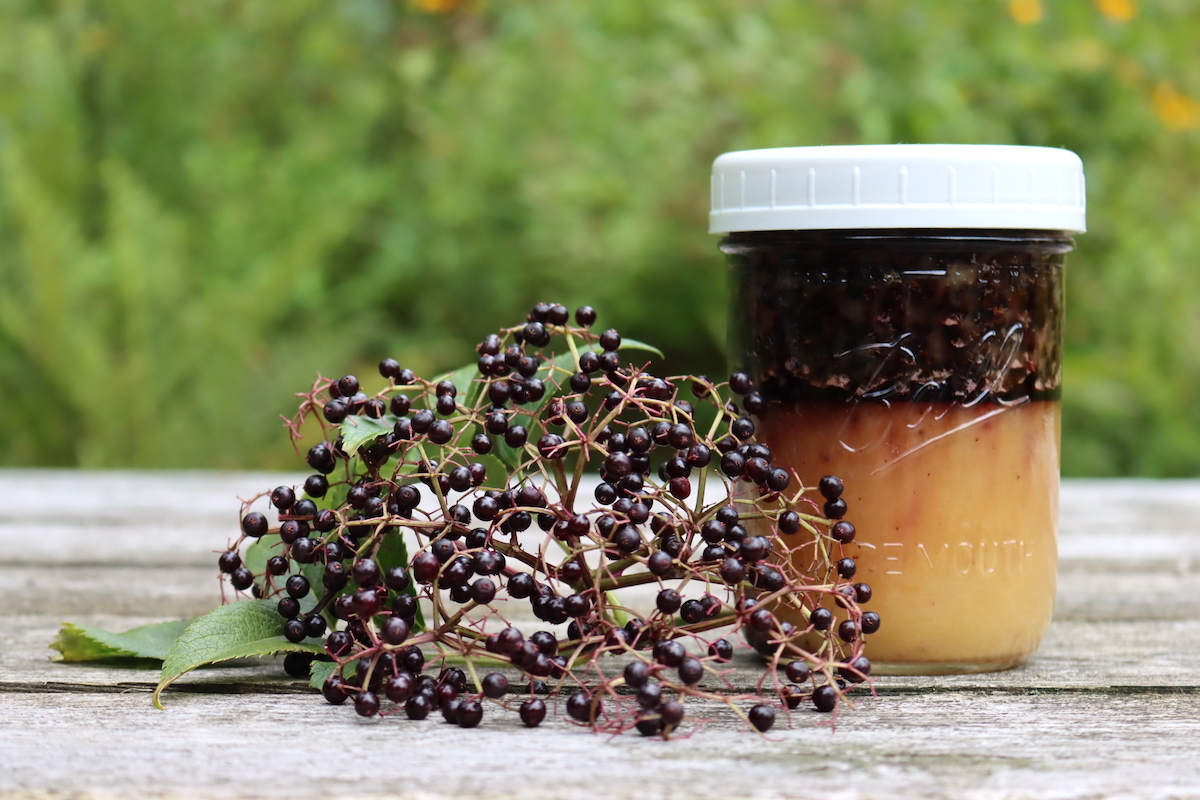
Stir the mixture every few days to distribute the herbs so that they infuse evenly. You can also turn the jar over in addition to stirring the make sure the infusion is happening uniformly. You might find that extra honey is needed the longer the honey sits as the last air bubbles come to the surface, but simply top-up the jar as needed.
The herbs should be left to infuse the honey for at least a week, but I prefer letting the jar sit for about 4 weeks. This ensures the infused flavor is on the stronger side, while bolstering the medicinal value of the honey if it will be taken as an herbal remedy.
When the infusion is to your liking, carefully strain the honey through a fine mesh sieve. Decant the infused honey back into a clean jar (or into smaller jars, if desired). Store the honey in a cool, dry place indefinitely.
Using Fresh Herbs To Infused Honey
It’s important to note that the herbs must be dried to make shelf-stable herbal honey!
Adding wet herbs will result in fermentation, which can be useful too, but it’s a different thing and has a completely different process. There are also safety considerations when working with fresh herbs in honey, as I discuss extensively in my article on making Fermented Garlic Honey.
Honey has too much sugar as it is to ferment on it’s own, but it does contain lots of wild yeast. Add water, even a tiny bit from fresh herbs, and it’ll spontaneously start to ferment. Add enough water, and you get mead (honey wine). This is handy for things like fermented honey herbal recipes, but a different thing than infused honey.
Good examples of fermented herbal honey include:
Best Herbs for Herbal Honey
When it comes to choosing the best herb(s) for infused honey, consider whether you want to use it for culinary purposes or medicinal purposes. These are just some of the possible herbs you can choose from to make infused honey, which is made with the dried leaves, flowers, or roots of the plant.
Astragalus is an adaptogenic herb, which means it helps the body — in this case, the immune system — adapt to stress. To make astragalus-infused honey, you’ll need to get your hands on the dried roots of the plant, which will then get chopped up and added to the honey.
Chamomile adds sweet notes of floral apple and straw to infused honey, making it a great condiment for baked goods (or as an actual ingredient, like in this recipe for honey lavender scones). Medicinally, chamomile is well-known for its soothing, anti-anxiety properties — a spoonful stirred into herbal tea before bedtime works wonders towards a good night’s sleep.
Echinacea is taken to combat cold and flu symptoms, and it has a strong, floral- and pine-forward taste that can be overpowering for some people. Infusing honey with dried echinacea helps mask the flavor, especially when it’s combined with a complementary herb like elderflower or chamomile.
Elderberry has a sweet and slightly earthy taste and is known for its immune-boosting properties. Honey that has been infused with dried elderberries is similar to elderberry syrup, which is taken for cold and flu symptoms. Be sure to use dried elderberries or you’ll end up making fermented elderberry honey, which is a different concoction altogether and potentially less shelf stable.
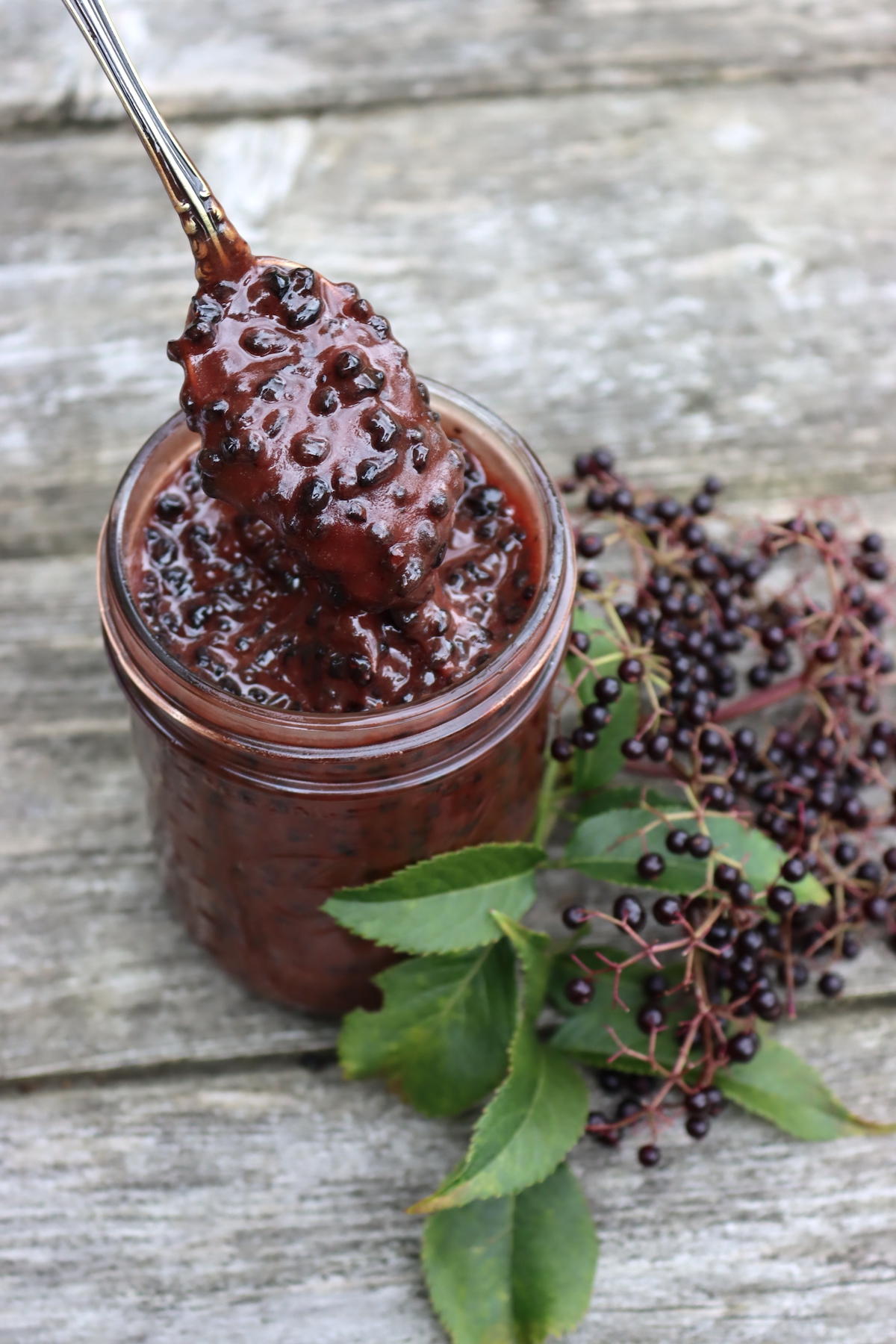
Elderflower gives honey a gentle sunny flavor, making the infused honey an ideal choice for baked goods, tea, and cocktails. It’s also taken for cold and flu symptoms as well as for an upset stomach.
Elecampane is traditionally taken for cough or tightness of breath. Elecampane has a rather unpleasant taste (I’ve heard it described it as “muddy” more than once), but infusing honey with the dried roots of this powerful medicinal herb makes the dose easier to take.
Holy Basil (also called tulsi) is another type of adaptogenic herb, one which I personally find to have a calming effect. Holy basil has a pleasant (albeit strong) flavor that will depend on the variety you’ve chosen — flavor notes typically include clove, pepper, lemon, peppermint, and licorice.
Honeysuckle is, unsurprisingly, a delicious addition to any infused honey. When dried honeysuckle blossoms are steeped in honey the resulting infusion has light floral notes and an added dimension of sweetness — truly lovely when drizzled over buttered toast or muffins.
Lavender and honey are a natural pairing — if you’ve ever tasted honey made from bees that have been using lavender as a food source, you’ll know what I’m talking about! Calming and with just the right amount of floral flavor, dried lavender blossoms are one of my favorite additions to honey.
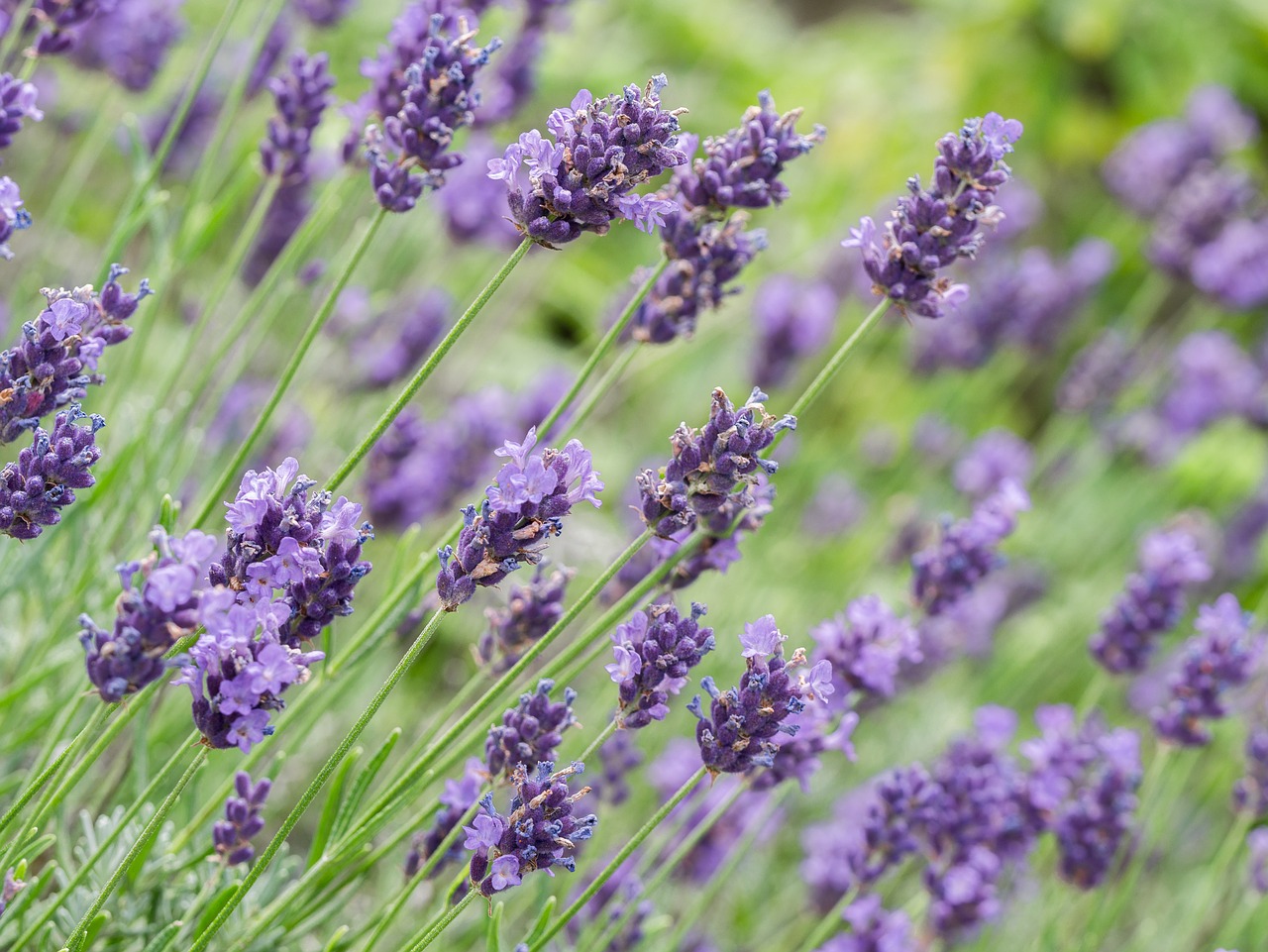
Sage gives honey a subtle pine-y flavor, which makes the resulting infused honey a good choice for charcuterie boards or drizzling over strong cheese. Thanks to the herbs natural anti-bacterial and anti-inflammatory properties, sage-infused honey can also be taken medicinally for sore throats and cough.
Thyme-infused honey is made with dried sprigs of thyme which give the finished product an earthy, delicate flavor. Honey that has been infused with thyme can be used to make salad dressings and marinades — it’s also a treat drizzled over still-warm cornmeal muffins with butter.
Valerian root has long been used as a natural sleeping aid, and an infused honey is the best way to take it in my opinion. Valerian does have a strong earthy flavor, so I’d advise making a small test batch first to see if it’s something you like.
Willow bark has traditionally been taken for pain, fever, and inflammation and an infused honey is an effective way to “help the medicine go down,” as the song goes. Willow bark is a rich source of salicilin, a compound that converts to salicylic acid, the active ingredient in aspirin, when ingested. For culinary purposes, steeping willow flowers in honey yields a light and golden honey that’s delicious drizzled over muffins or scones.
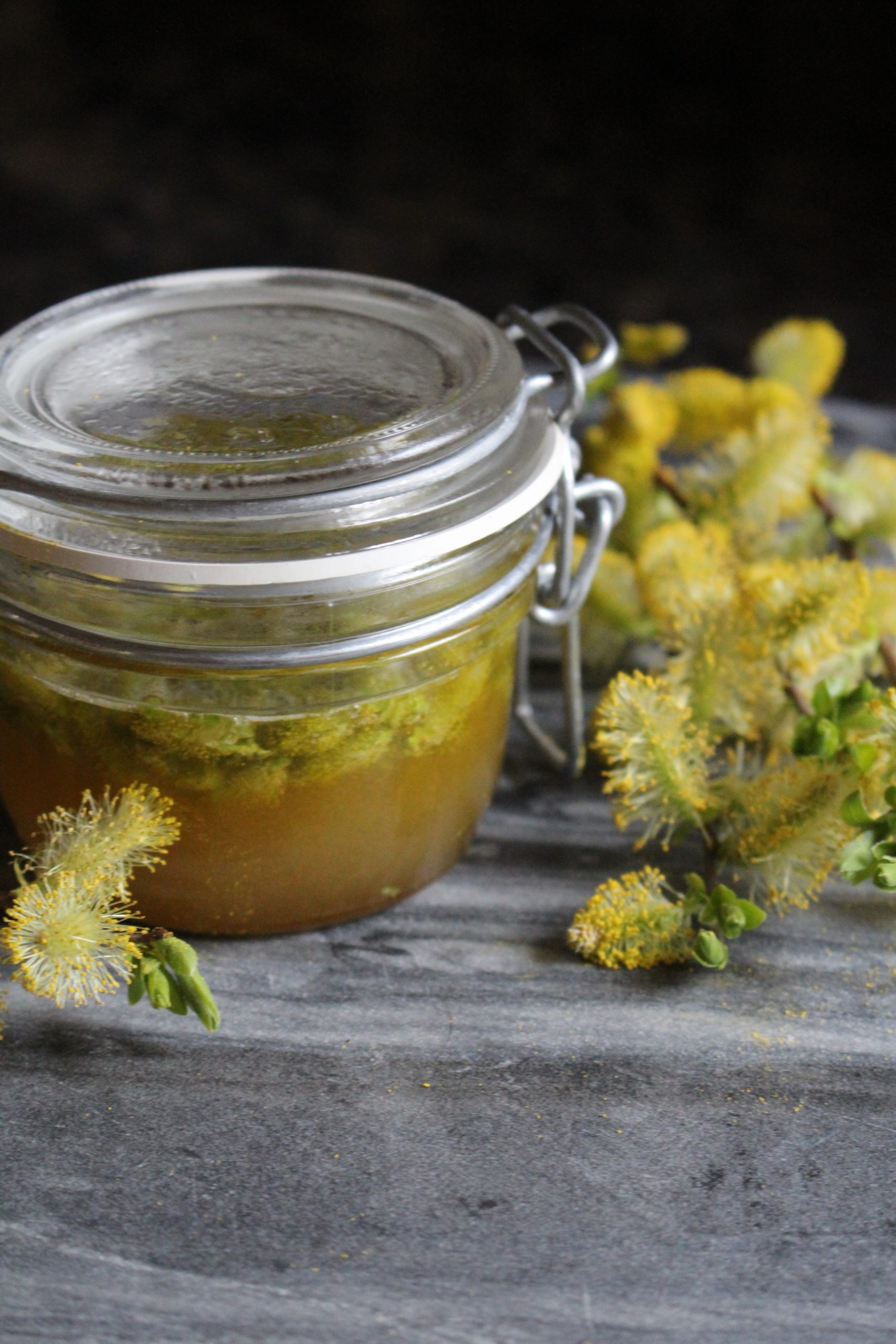
Infused Honey Recipes
When it comes to making your own herbal-infused honey, there are near-endless combinations of dried herbs one can choose from. Even if you’re taking the single-herb route, there are so many different options to think about.
These recipes call for several types of dried herbs and provide a blueprint for other types of infused honey if you feel inspired. If you can’t find a certain herb feel free to substitute something else — just use the equivalent called for by weight.
- Dried Sage Honey
- Astragalus Chai Powder Honey
- Lavender Infused Honey
- Elderflower, Thyme, and Sage Honey for Coughs
- Chamomile and Lavender Honey
Once you’ve made your own herbal-infused honey, there are so many ways it can be put to use!
How to Use Herbal Infused Honey
Honey that has been infused with dried herbs, especially those with calming or throat-soothing properties, is a real treat when swirled into a hot cup of tea. Some herbs might have a strong flavor, but the sweetness of the honey helps disguise these flavors. I’ve found this to be a good method for administering certain types of medicinal herbs to my kids (above the age of 2).
When cold and flu season rolls around, you can also make a homemade fire cider (which will have a very strong, but satisfying, flavor) with your favorite infused honey.
Infused honey can also be used in place of traditional honey in all kinds of culinary applications. For example, you can jazz up any cocktail that includes honey simple syrup on its list of ingredients by making the syrup with honey that has been infused with dried lavender, thyme, or elderflower (or any complementary flavor).
If you’re into home brewing, try substituting herbal-infused honey in any of these mead recipes to make your own herbal honey wine.
You can also use infused honey in various cooking and baking projects. A simple honey cake or loaf of honey bread is the perfect way to show off the flavors of your handmade infusions. Likewise, honey that has been infused with savory herbs like dried sage or marjoram will give vinaigrettes an intriguing flavor (or simply drizzle the honey on its own over a fresh fruit salad).
Herbal-infused honey makes a gorgeous gift, especially when it’s decanted into half-pint jars and tied with a ribbon. If I have a dried sprig of whatever herb is in the honey, I like to attach it to the top of the jar (a sprig of dried or fresh lavender is a particularly pretty addition).
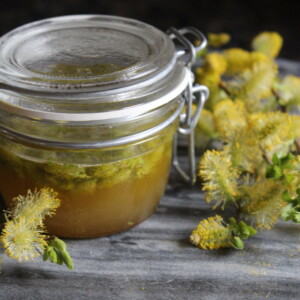
Herbal Infused Honey
Ingredients
- Honey, raw, mild honey preferred
- Dried herbs
Instructions
- Fill a clean jar halfway full of dried herbs.
- Carefully pour honey over the dried herbs and fill the jar. Use a chopstick to get rid of any air bubbles.
- Apply lid to the jar, place in a warm location (such as a sunny windowsill).
- Let the dried herbs steep in the honey for at least 1 week and up to 4 weeks, depending on how strong you'd like the flavor/medicinal benefits to be. Stir every few days and top with extra honey as needed.
- Strain the honey using a fine mesh sieve. Decant into a jar or a several smaller jars. The honey is ready to be used and will keep indefinitely.
Notes
DIY Herbal Recipes
Looking for more herbal DIY projects?
- Herbal Tea for Winter Immune Support
- Homemade Herbal Shampoo
- 30+ Medicinal Flowers and How to Use Them
- How to Make Herbal Glycerites
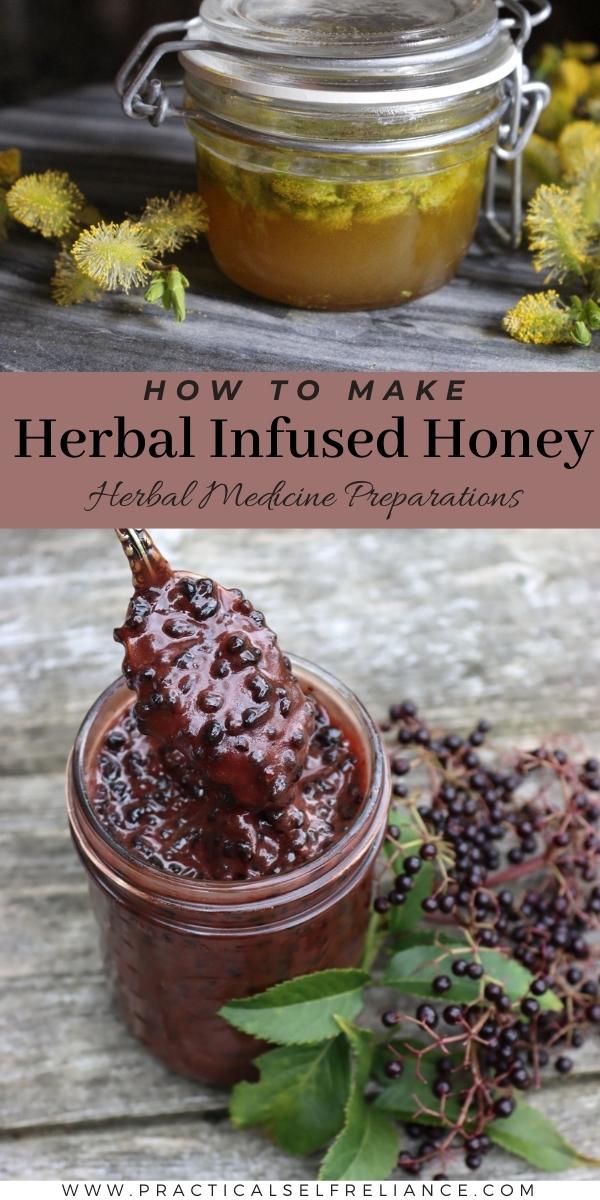


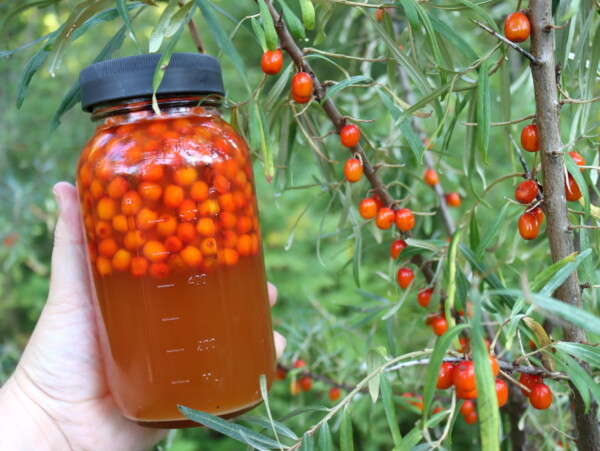
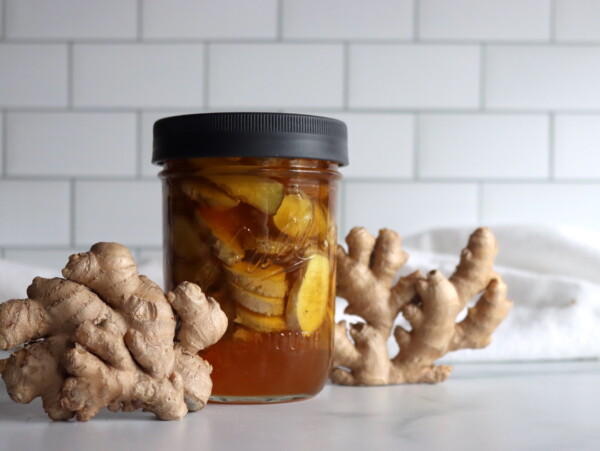
I infused dried elderberries, but ended up with lots of little elderberry particles in the honey after straining with cheesecloth. Is there a better way to remove the particles? Honey already doesn’t strain very easily through cheesecloth, I can imagine using anything finer.
The article actually suggests using a fine mesh sieve for straining. Did you crush the elderberries? I wouldn’t think that you would have small particles like that with the elderberries.
could this work with a powdered herb? something like ginger or tumeric I’m thinking
Yes. When you work with powdered herbs, it’s generally called an Electuary, and you use it as a paste (rather than filtering it out).
Would the ratio for powdered herbs be the same as for whole herbs?
When you’re making an electuary with powdered herbs, you just add in enough honey to the herbs to make a thick paste and then add in as much honey as you want to get the desired consistency and flavor that you’re looking for. In an electuary, you are actually consuming the herbs along with the honey rather than straining them out after the infusion.